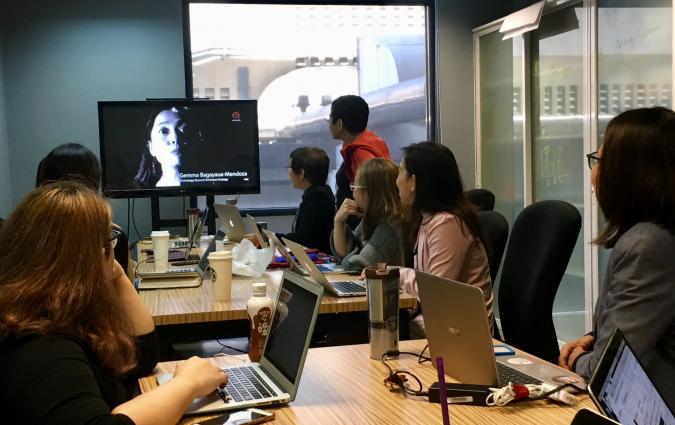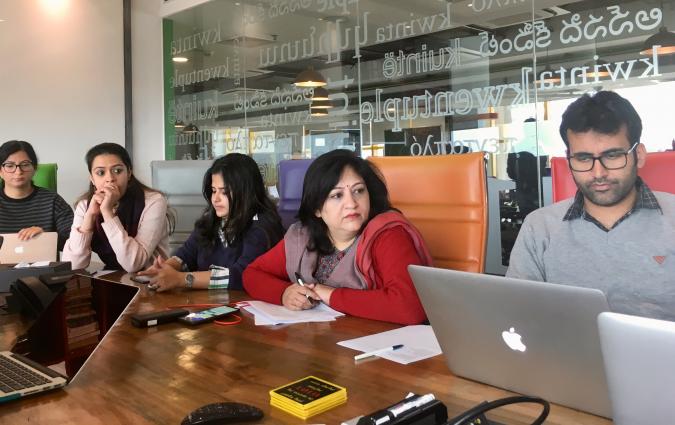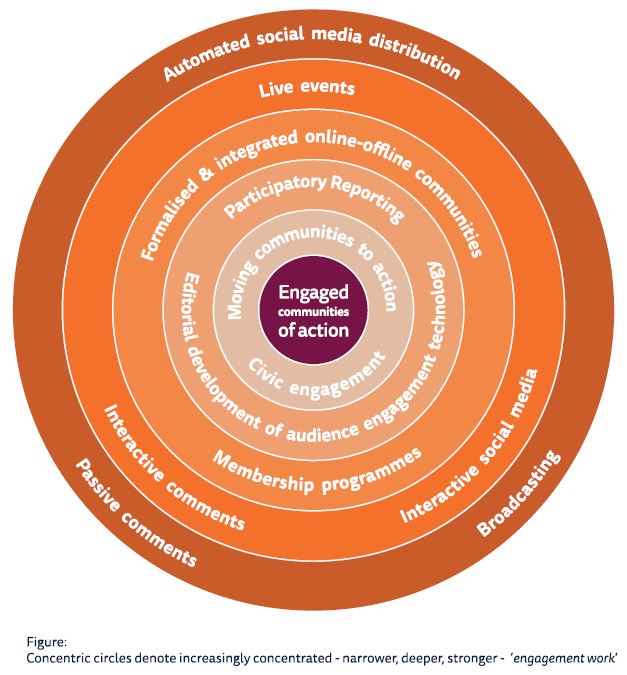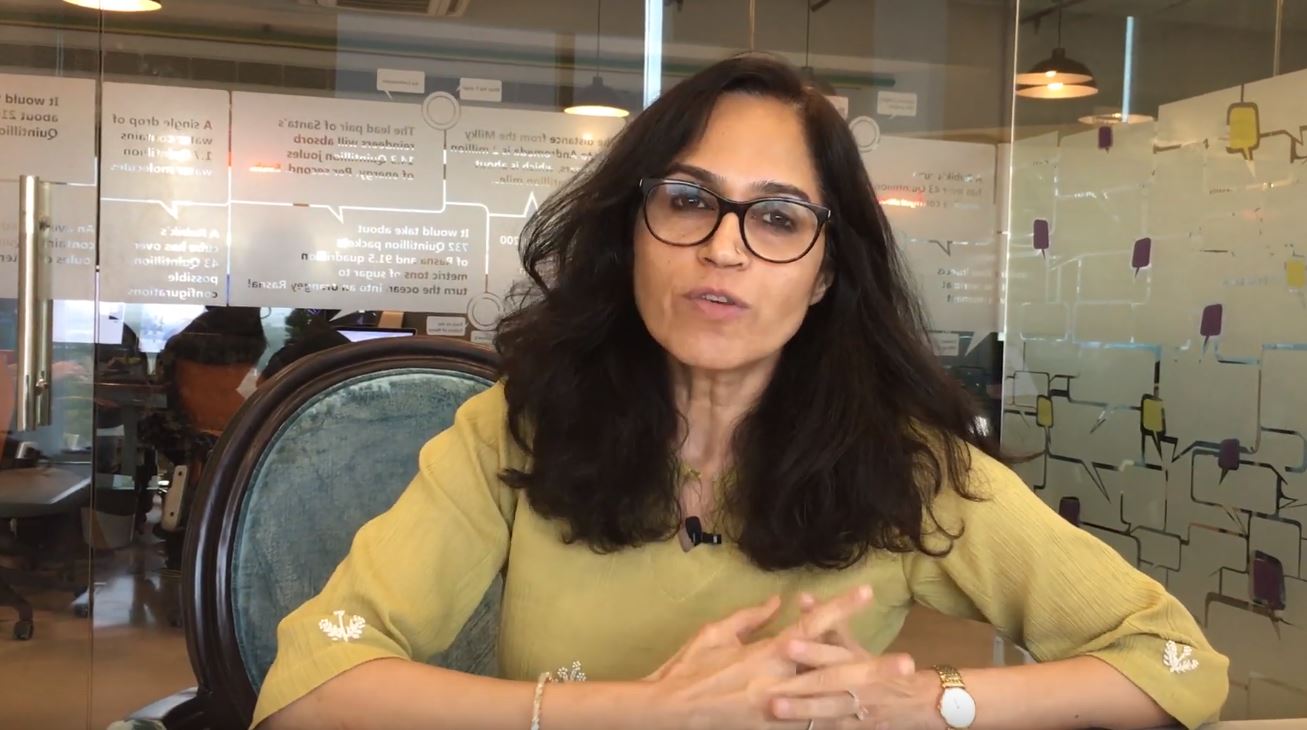The Journalism Innovation Project was led by RISJ Senior Research Fellow Dr Julie Posetti. It ran in 2018 and 2019 and it aimed, through collaborative research methods, to identify key indicators for ‘sustainable’ journalism innovation.
This goal was pursued through the identification and study of international news organisations working hard on the problem across a range of dimensions on the Journalism Innovation Wheel.
The project adopted a Participatory Action Research approach and it involved Dr. Posetti anchoring interactive roundtable discussions with leading international journalism innovators before being embedded within three news organisations (Rappler in the Philippines, Daily Maverick in South Africa, and The Quint in India), to observe and engage with their staff and operations. In the field, Dr Posetti conducted 45 long-form interviews with editors, CEOs, journalists, producers, social media and product specialists. She was also added to internal discussion groups, editorial email lists, and agenda-setting diaries during her attachments to the news organisations. Project collaborators Felix Simon and Nabeelah Shabbir later conducted additional interviews to round out the research data that formed the corpus.
Journalism Innovation Wheel

Research reports
The first report from the project argued that the news industry had become too obsessed with technology-led innovation in the absence of clear, research-based strategies, and suggested a need to avoid ‘Shiny Things Syndrome’ while responding innovatively to existential crises. Additionally, we noted new journalism innovation considerations, such as the implications of digital technology’s ‘unintended consequences’ – like gendered online harassment (Mijatovic 2016; Posetti 2017; RSF 2018), and orchestrated disinformation campaigns propelled by unmediated social platforms (Ireton and Posetti 2018; Bradshaw and Howard 2019). And, we identified the need to respond innovatively to media freedom threats.

Time to step away from the ‘bright, shiny things’? - Journalism Innovation Project: report 1
The second report focused on how three news organisations were combating disinformation through innovative, mission-driven, audience-centred journalism in the Global South —in the service of both democracy and their communities. Rappler in the Philippines, Daily Maverick in South Africa, and The Quint in India were selected because of their commonality as commercial, digital-born enterprises driven by a strong mission to produce independent journalism with the aim of serving the public interest and defending destabilised democracies. Additionally, they had each been targeted through orchestrated digital disinformation campaigns and politically motivated attacks on media freedom, threatening their viability.

Lessons in Innovation: How International News Organisations Combat Disinformation through Mission-Driven Journalism - - Journalism Innovation Project: report 2
Maria Ressa, CEO and Executive Editor of Rappler.com, talks here about the second Journalism Innovation Project report, ‘How International News Organisations Combat Disinformation through Mission-Driven Journalism’.
The third report focused on the same trio of news organisations and covered the creative evolution of their audience engagement strategies and practices as they faced political attacks, tough financial conditions, and the risks associated with various forms of what we called ‘platform capture’. We found that these news organisations are evolving, and are increasingly focused on forging deeper, narrower, and stronger relationships with audiences, emphasising physical encounters, investment in niche audiences over empty reach, and moving communities to action.

Rebooting Audience Engagement When Journalism is Under Fire
"At the Daily Maverick in South Africa, Rappler in the Philippines, and The Quint in India, a combination of network mapping and analysis, audience-engaged fact-checking verticals, and traditional investigative reporting, along with community-focused issues and policy analysis, has been driving coverage. Underpinning these strategies was a common sense of democratic mission associated with accountability journalism."
Project lead Dr Julie Posetti, and report co-authors Nabeelah Shabbir and Felix Simon, outline how several newsrooms across the Global South undertook innovative fact-checking, reporting and audience engagement to combat disinformation during their countries' 2019 elections.
Ritu Kapur, co-founder and CEO of The Quint in India, talks about the mission of The Quint, one of three news media outlets featured in the project.
Circles of Engagement Innovation

- There is a clear desire to pull back from the high-speed pursuit of ‘bright, shiny things’ (i.e. the proliferation of new tools and technologies) and to refocus on foundational concepts of journalism innovation, audience needs, and core elements of practice, especially within legacy news media contexts
- There is an identified need to develop research-informed, longer-term strategies designed to foster sustainable innovation.
- There is evidence of significant change fatigue and burnout that risks impacting on journalism innovation efforts, in part caused by relentless pursuit of ‘bright, shiny things’.
- These impacts are not uniform: smaller, ‘digital born’ news publishers indicated that they do not have time to ‘slow down’, nor contain experimentation, because their survival depends upon it.
- There is an evolving new set of innovation markers e.g. the need to consider unintended consequences of technological innovation (such as gendered online harassment and viral disinformation); the role of diversity in audience development and divergent global contexts; growing media freedom threats and limitations.
- A clear journalistic mission helps focus innovation.
- Ability to ‘pivot’ in response to a crisis is an innovation marker.
- Audiences can be part of journalism innovation.
- Innovation requires investment in new skills, tools, techniques, and training (no matter how limited resources are).
- With a clear mission, it is possible to do important, innovative journalism for a large audience even with limited resources.
- Relationships with communities don’t just ‘resist’ scale (Morgan 2019: 12). Scale can break communities, especially when combined with various forms of ‘platform capture’, including the ‘weaponisation’ of online communities, and frequent changes to platforms’ products and policies.
- Once weaponised at-scale, audiences can’t be recalibrated through direct engagement at scale – instead, deeper, narrower, and stronger is key: smaller audiences properly engaged can still play a significant role through collaboration, distribution, and impact
- Orchestrated online harassment campaigns targeting news outlets and their journalists can be extremely damaging to them (creating significant health, safety, and security risks), but also to their online communities, impacting significantly on ‘engagement work.’
- Civic engagement through community partnerships and citizen reporting initiatives can still deliver loyal audiences and pathways to fresh revenue streams, even if some ‘at-scale’ audiences have turned toxic
- Technology still has an important role to play in audience engagement innovations, but that role should be editorial-led, with public interest oversight.
- A key indicator for journalism innovation is the capacity to remain audience-led and reboot engagement when online communities are ‘weaponised’, or when platforms tweak their T&Cs or algorithms
- Loyal audiences and members can be seen as guardians of news outlets and their mission: providing challenging and independent journalism in countries where media freedom is under threat, and democratic norms are eroding.
Julie led the Journalism Innovation Project, and was lead author of the project's three reports. She was a Senior Research Fellow of the Reuters Institute.
Nabeelah is a research assistant for the Reuters Institute and has worked on two of the project's reports. She has co-written several other RISJ research reports. Nabeelah is currently Conversation Editor at the Correspondent.
Felix is a research assistant for the Reuters Institute and worked on two of the project's reports. He has worked on several other RISJ research reports. Felix is currently a doctoral student at the Oxford Internet Institute.




